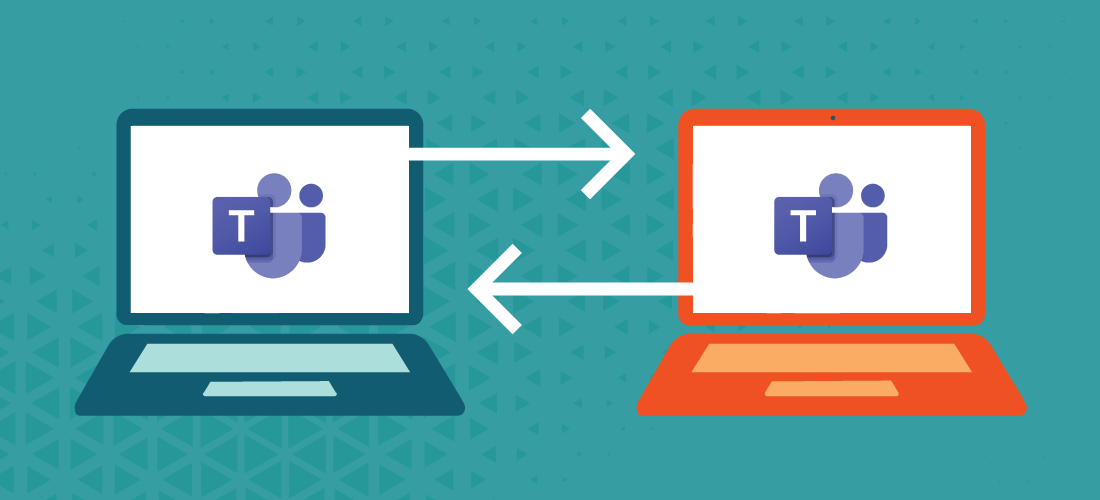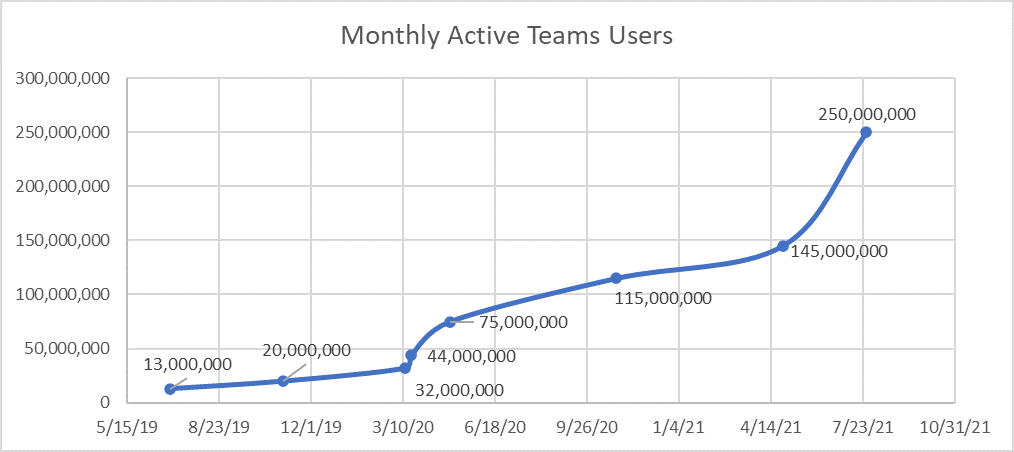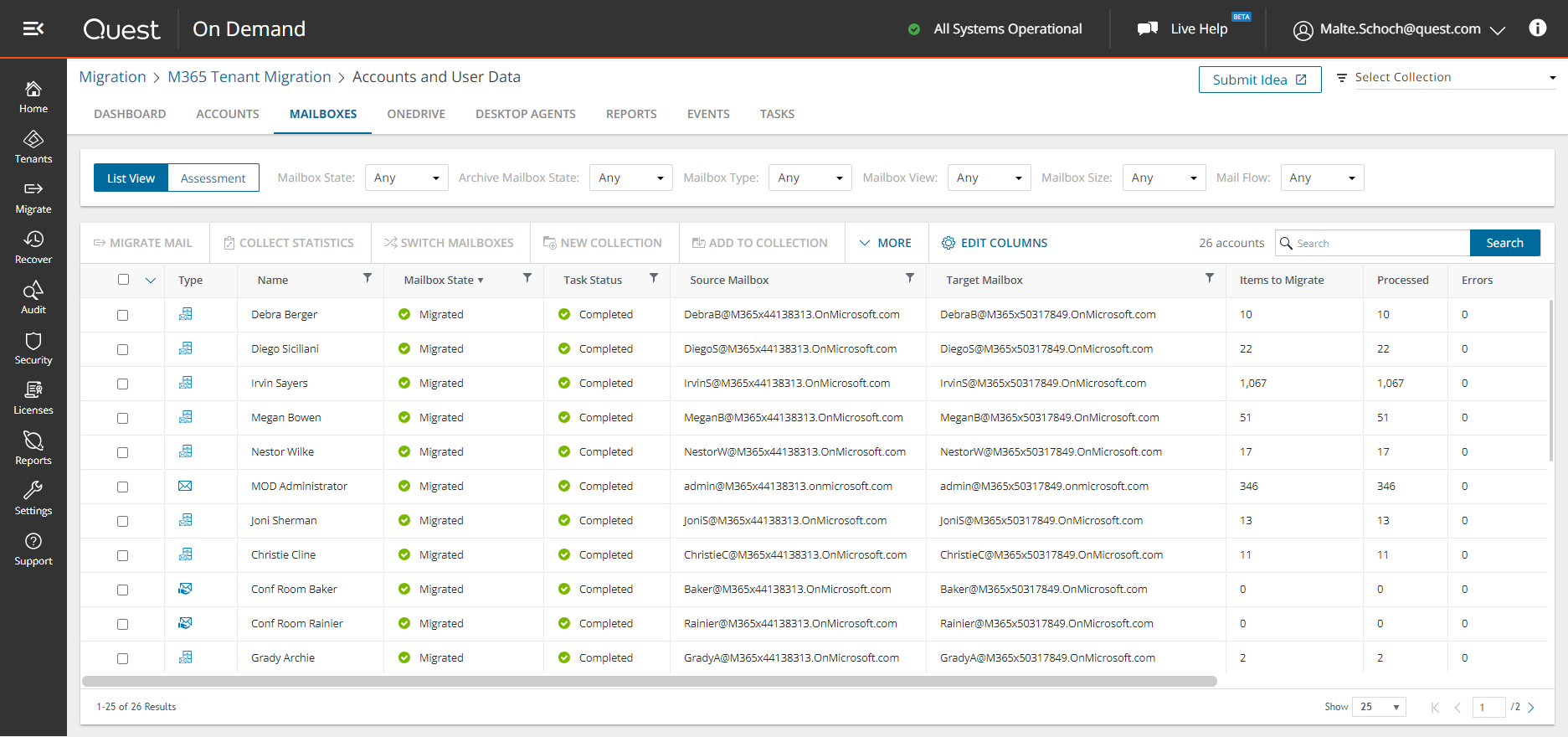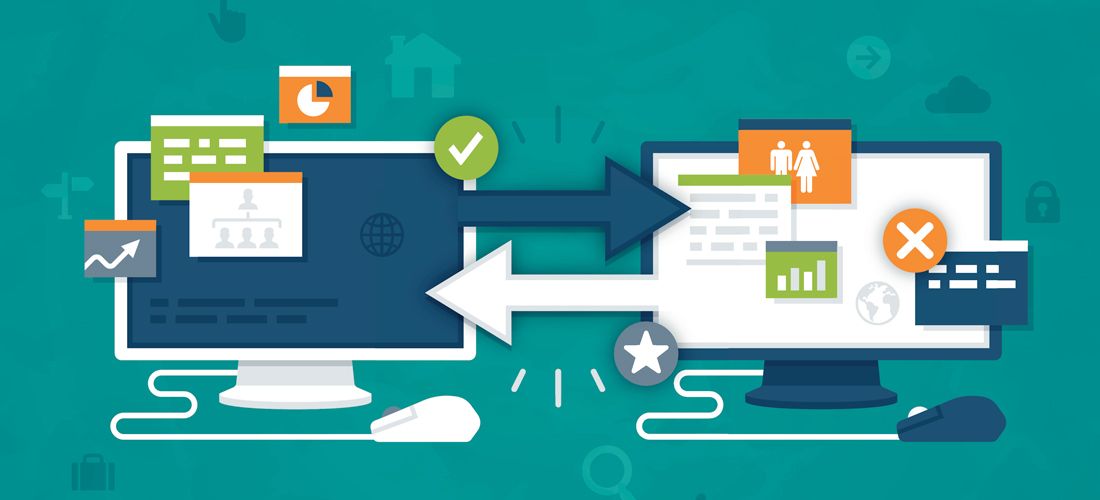
Paul Robichaux and I presented a great session at Commsverse outside of London recently. We boldly titled our session “Microsoft Teams Migrations: It just keeps getting worse!”
Hidden in the mayhem, we discussed how you can be the best when approaching a migration project. With the explosion of the platform, many aspects of Microsoft Teams migrations have been challenging. However, there is a lot of good news in this space as well. In this article, we will review the state of affairs for Microsoft Teams migrations and the key points from our session.
More data, more problems
We have all experienced the extreme adoption of Microsoft Teams, much related to the COVID-19 pandemic. In fact, as of July 2021, we saw 250 million monthly active Teams users. That is nearly double the amount six months earlier. With this adoption, Microsoft has made massive investments in the shipping of major features in a short period. These features have been world-class and drastically shaped how we work and live.

(Based on data from Microsoft’s financials)
As some of us return to physical offices, many will begin working in a hybrid setup, or some sort of remote working model. Microsoft Teams is here to stay.
With this exponential growth, we can imagine the explosion of data volume in Microsoft Teams and related storage areas. This includes files, channel messages, tie-ins to other products, 1:1 chats, group chats, private chats, and so much more. When it comes to migration, lessons from past migrations ring true: The more data and complexity, the longer and more difficult migrations are.
Most migrations are driven by rapid merger, acquisition and divestiture activity. Most companies didn’t grow with migration in mind. For many organizations, this creates a superstorm migration event with all these conflicts coming together at once.
API capacity challenges
In March 2020, independent software vendors (ISVs) got a stark warning from Microsoft. Amid growing pains with remote working, ISVs had to play their part in lightening the load of the Teams service. We were required to work off-hours and ensure we were efficient in our API use. We saw drastic data protection methods come into play to ensure Teams remained up and running. However, this left migration activity to be considered a background practice, with tight restrictions.
Furthermore, we see charges starting to come out for the export API, as outlined on Practical 365. The restrictions on these APIs continue to make Microsoft Teams migrations a significant challenge, requiring ISVs like Quest to be creative and make the most out of every API call.
While things have improved, we are still a bit lop-sided in the amount of data we need to move, the type of data and the API limitations.
Function limitations
There is no question about the tremendous power of Microsoft Teams. However, there are some challenges with all the features that users have. Features are released for their function, not with migrations in mind. This scenario means that many functions and features cannot migrate via APIs. While, again, this is getting better, it is still a limiting factor. As a result, Microsoft Teams migrations require clear dialog with users on what is and isn’t migrating. These communications may need to be customized for each project.
For example, in some projects where data volumes are too large, some users and Teams will get one data migration experience, while others get a lighter experience. Another group may even find that their data needs to be delayed a bit after the migration window.
Is anything getting better?
The good news is that things are getting better in the world of Microsoft Teams migrations. More experience and automated migration tools are paving the way for better outcomes for new and combined organizations. I am often asked how to be successful when approaching a Microsoft Teams migration. Below are a few tips to help set you up for success.
How to be successful in a Microsoft Teams migration
1. Report and investigate
To begin, it would help if you studied who is enabled for Teams/has a license and what they are doing with it currently. If you only focus on who is enabled for the service, you will either miss essential functions being used or over-plan for users with low consumption.
For a long time, Microsoft Teams migrations had minimal options. This scenario meant it didn’t matter what users were actually using, as only minimal items could be migrated. Although some challenges remain today, we now have many more options available, with support for the most common uses in Microsoft Teams.
When reporting and planning, you need to understand the source environment in a lot more detail. The time is well worth it, as you will find more items to test and communicate.
It is also a good practice to look at the most active Teams and conduct some interviews. Most environments will have a top 10 or 25 set of Teams that need to be investigated. In your investigation, interview Team Owners to understand items that might be problematic in the migration. You may need to ask these users to log in over the migration weekend to correct items that need manual work.
2. Delay migrating old and archived teams
Some data workload migrations are very stable and can handle large volumes of data. The leading example is Microsoft Exchange. For many of these migrations, I never worried about prioritizing data. With Teams, however, this isn’t the case. A good migration administrator always tries to protect – or simply put, limit – the activity inside your migration window. A great way to do this in Microsoft Teams is to delay or not migrate old and archived Teams. If a Team is not actively being used, do not migrate it in your window. Keep your focus on the active usage, particularly your top 10 or 25 used Teams. For low priority data, address it after the migration window.
3. Pre-sync whatever you can
With all the API challenges we talked about above, you should try to pre-sync as much as you can. Pre-syncing does not mean you should sync months in advance, as you may consume more API capacity over time in delta syncs. You should, however, pre-sync as much data as you can to protect your migration window. This practice will give you the best outcome by getting only the required tasks done in your previous window.
4. Let owners into the target for complex usage
Complex usage will require Team Owner collaboration. Someone may need to go into the Team and reconnect an add-on or other similar activities. You may want to work with Team Owners of critical Teams to get them into the target early to do these corrections. This will allow users to feel as comfortable as possible the day after the migration.
5. Work with management to set expectations
Your management team needs open communication about how hard these migrations are. It is far better to set the expectations early, so they are not surprised during the migration. Test major functions and ensure you are aware of what migrates well and what doesn’t.

One solution. Many workloads.
6. Communicate openly with users
Just like good communication with your management, it needs to be matched with your users as well. Ensure your users know why the migration is happening and what they will get out of it. Educate them and seek their support. A heartfelt video message from CIOs and other leaders goes a long way to earn their buy-in and have an effective outcome.
7. You can “go fast,” but be careful
Microsoft Teams migrations are complicated. You cannot have a high-quality outcome by moving too fast. However, you will also hit the point of diminishing returns if you try to make it perfect. Strike a balance to get the project done and as complete as possible.
8. Slack-to-Teams
In this article we focused on Microsoft Teams migrations from one tenant to another. However, I also created a detailed article on how to approach Slack to Teams migrations, which you may find helpful as well.
Conclusion
Microsoft Teams migrations can be a big challenge. However, with proper planning and research, you can mitigate many of the challenges. If you have an upcoming Teams migration, consider utilizing Microsoft Teams migration solutions and the experienced Professional Services team at Quest. We’d be happy to assist you.



